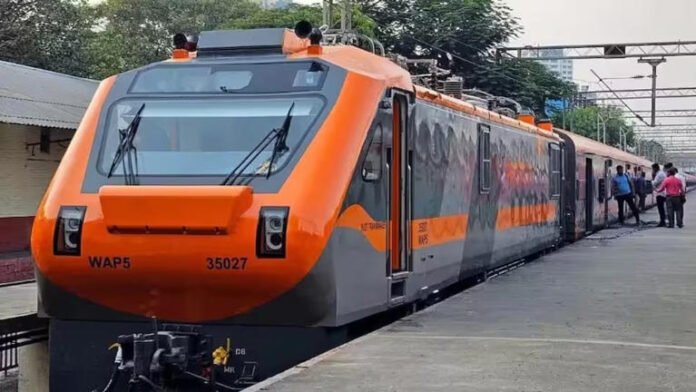Prime Minister Narendra Modi is all set to flag off five new train services in Bihar on April 24. The launch includes both the high-speed Namo Bharat Rapid Rail and the recently introduced Amrit Bharat Express—marking a significant moment in the state’s railway history.
The new trains are expected to enhance not just intra-state travel but also inter-state connectivity, bridging long-standing transport gaps and offering faster, safer, and more comfortable journeys to the people of Bihar and beyond. The virtual inauguration by the Prime Minister is likely to be attended by railway officials, political leaders, and enthusiastic locals eager to witness the state’s leap forward in rail mobility.
Amrit Bharat Express: A Journey Toward Progress
Among the five services, the spotlight will shine brightly on the Saharsa–Amritsar Amrit Bharat Express. This long-distance train aims to link the eastern town of Saharsa in Bihar to the holy city of Amritsar in Punjab, passing through important junctions such as Darbhanga, Sitamarhi, and Ayodhya.
Designed with a focus on both affordability and comfort, the Amrit Bharat Express is capable of reaching speeds up to 130 km/h. It comes equipped with modern safety features such as CCTV surveillance, improved seating, LED lighting, and eco-friendly bio-vacuum toilets. The addition of this express train is expected to significantly reduce travel time and enhance the passenger experience.
Namo Bharat Rapid Rail: A New Era of Intercity Travel
Another much-anticipated launch is the Namo Bharat Rapid Rail, also referred to as Vande Metro. Designed for short-distance, high-frequency travel between major cities, this new rail service is positioned as a game-changer for daily commuters and business travelers alike.
Built to operate at speeds of up to 130 km/h, the Namo Bharat trains feature state-of-the-art amenities such as automatic doors, air-conditioned coaches, infotainment systems, and GPS-based passenger information displays. The train is especially tailored to cater to travel demands within the 100 to 250 km range—ideal for connecting emerging urban clusters in Bihar.
Strengthening Bihar’s Rail Ecosystem
The remaining three trains, though yet to be detailed in full, are part of a broader strategy to improve both passenger and freight movement across the state. These services are expected to target regions with historically limited access to rail transport, ensuring that development reaches the farthest corners of Bihar.
Railway officials have emphasized that this expansion is not just about transportation—it is about transforming Bihar’s socio-economic landscape. Improved rail connectivity will facilitate easier access to jobs, education, healthcare, and markets, particularly in rural and semi-urban regions. The new trains are expected to stimulate economic activity, support local tourism, and even open new trade opportunities by connecting major agricultural zones to larger markets.
A Vision of Connectivity and Inclusion
This launch aligns with the broader vision of “Amrit Kaal,” a term coined by the Prime Minister to signify a period of accelerated national development. The introduction of these trains in Bihar—one of India’s most populous yet infrastructure-starved states—is seen as a concrete step in that direction.
Railway development in Bihar has long lagged behind compared to other parts of the country, often due to challenging terrain, population density, and historical neglect. However, recent years have seen increased focus on infrastructure investment in the state, and this event is symbolic of the shift in momentum.
Looking Ahead
As the countdown begins for the official flag-off on April 24, excitement is palpable across the state. From railway stations being freshly painted to platforms being upgraded, preparations are in full swing. For passengers, these new services represent more than just trains—they symbolize opportunities, growth, and a bridge to a better future.
With these developments, Bihar is not just getting new trains—it’s getting a renewed sense of connection, inclusion, and pride. As tracks stretch across the state, so does the promise of progress.

